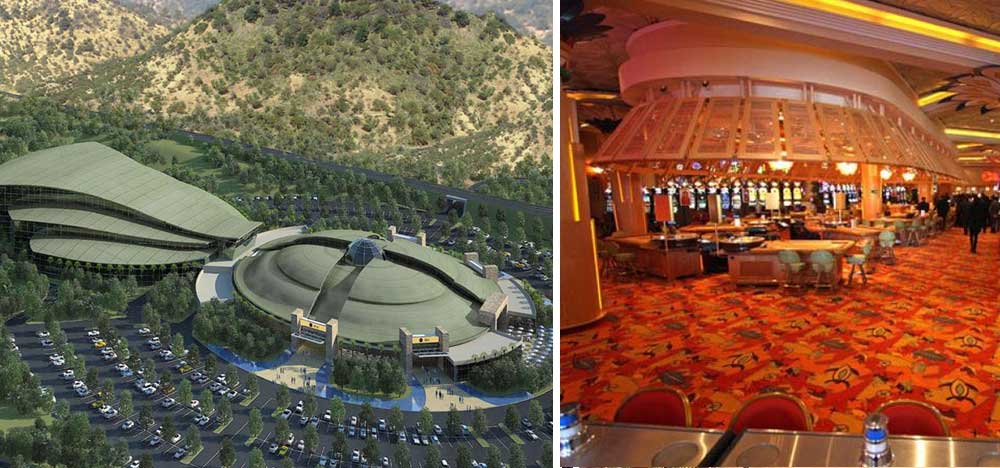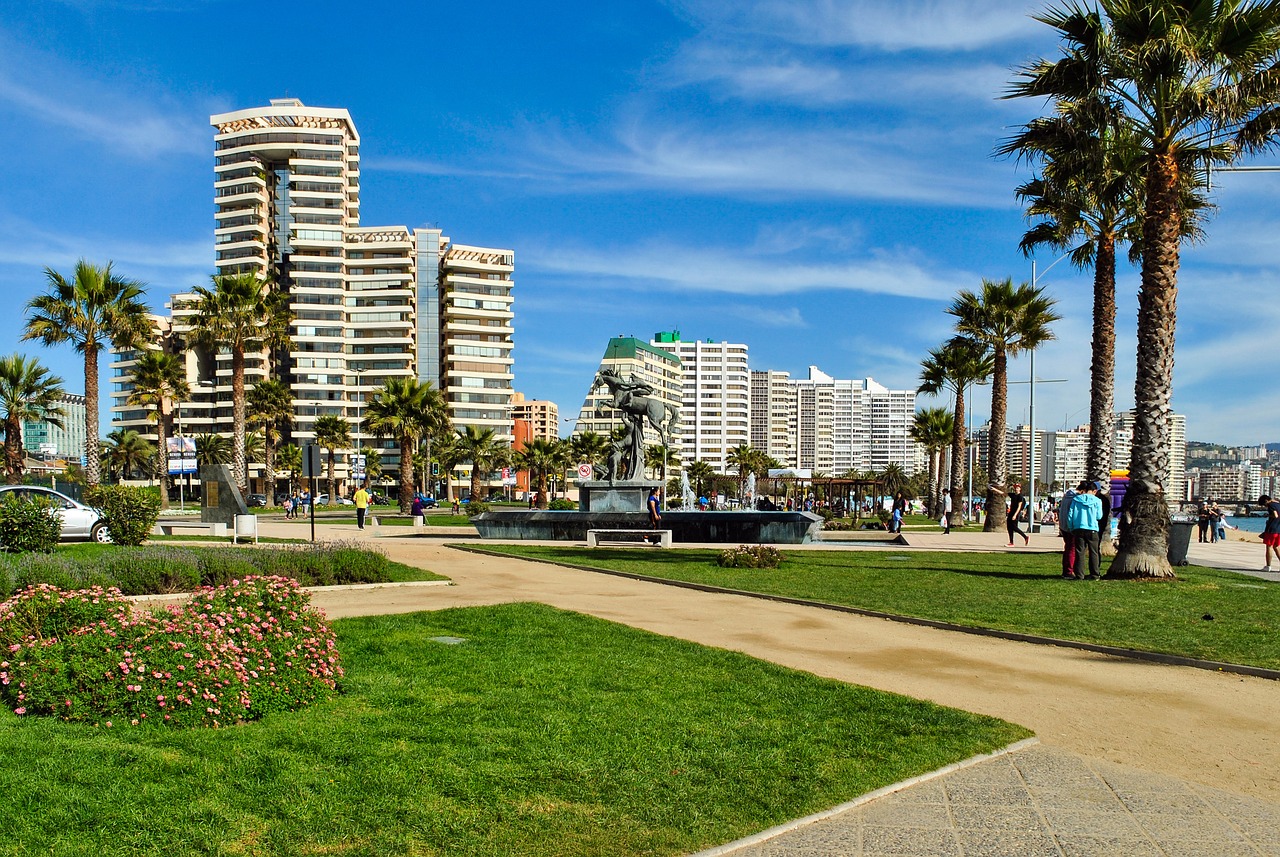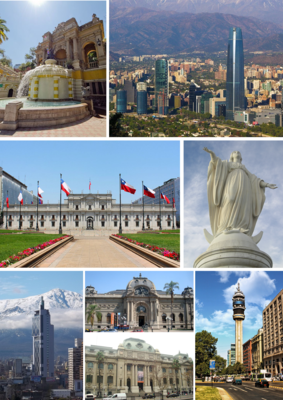Casino Santiago Do Chile
Santiago de Chile, more commonly known as just Santiago, was founded by the Spanish in 1541, and has served as Chile’s capital since the colonial days. It’s a bustling city of more than six million people, but you’ll still find traces of its heritage in the colonial and 19th century neoclassical buildings. This scenic city has several hills that tower above it, with the Mapocho River flowing through it and the Andes Mountains in the background. Subsequently, you can also find several boutique hotels with stunning views here.There are a variety of tourist attractions in Santiago de Chile, from the religious to the quirky and funky.
El audio no es muy claro pero igual quiero compartirlo con uds. Para recordar esa emotiva noche con el maravilloso publico Chileno, chi chi chi, le le le, Vi. Santiago de Chile, more commonly known as just Santiago, was founded by the Spanish in 1541, and has served as Chile’s capital since the colonial days. It’s a bustling city of more than six million people, but you’ll still find traces of its heritage in the colonial and 19th century neoclassical bui.
10. La Moneda
La Moneda, also known “Coin Palace” because it used to be a mint, is where the president of Chile has his offices. Several other key government officials also have offices in the neoclassical structure that takes up a whole block in downtown Santiago. The building’s days as a mint ended in 1828 and it became the Chilean seat of government in 1845. It was bombed during the coup that put Pinochet in power in 1973 but has since been restored. A changing of the guard ceremony takes place every two days, with the days depending on the month.
9. Museum of Memory and Human Rights
Chile’s record of human rights hasn’t always been stellar, hence the Museum of Memory and Human Rights. Only open for a few years, the museum is a memorial to Chileans who had their rights violated during the Pinochet regime (1973 – 1990). In perhaps an ironic twist, Chile’s then-President Michelle Bachelet, a victim of Pinochet’s torture, laid the museum’s first stone in 2008. The museum houses torture devices used by Pinochet forces, prisoner letters to family members and survivors’ statements. At the entrance you’ll find the last poem of Victor Jara inscribed at the entrance. The poet was an early victim of Pinochet’s regime.


8. Gran Torre Santiago
The Gran Torre Santiago towers over Santiago and is so high it can be seen from just about anywhere in the city. At 64 stories high, it is the largest skyscraper in Latin America and the highest occupied floor in the Southern Hemisphere. It’s 300 meters (984 feet) high and has six basements. Officially known as Costanera Center Torre 2, it’s part of the center’s complex that includes the largest shopping mall in South America. About a quarter-million people a day come here. You’ll find an observation deck on the upper floors that provides 360-degree views of Santiago.
7. Museo Chileno de Arte Precolombino
The Museo Chileno de Arte Precolombino, or Chilean Museum of Pre-Columbian Art, has items dating as far back as 10,000 years. It covers Pre-Columbian art not only from Chile, but from the rest of South America and Central America as well. It started out with a private collection and has grown to more than 5,000 artworks and artifacts. These items are made from diverse materials, including metal, textiles, ceramics, bone and leather. Located in central Santiago, the museum honors the awesome artistry of indigenous peoples prior to the arrival of the Europeans, in particular the Spanish.
6. Cerro Santa Lucia

Cerro Santa Lucia is a hill in central Santiago that represents the remains of a 15-million-year-old volcano. The hill was originally called Huelen but was renamed in 1543 in honor of Santa Lucia when the Spanish conquistadors took the hill. Over the centuries it’s been home to a fort or two, and many dissidents, who either weren’t Roman Catholic or other or others considered unworthy. The hill was remodeled in the 19th century. Today you’ll find a park, statuary, fountains and a castle that has been remodeled into an events center. You’ll also find some great views of Santiago.
5. Mercado Central
While the Mercado Central sells other food, the seafood is the main reason you go there. Here, you’ll find a variety of seafood fresh from Chile’s long coastline: fish, oysters, mussels, scallops, clams and a whole lot more. If you’d rather eat seafood than shop for it, the market has plenty of restaurants. Mercado Central is Santiago landmark that’s been in business since 1872. It’s housed in a sprawling building accented by wrought iron – even the roof is made from wrought iron. Mercado Central can be found close to Plaza de Armas in central Santiago.
4. La Chascona

Noted Chilean poet and Nobel literature prize winner Pablo Neruda had three houses, of which La Chascona is one – the others are in Valparaiso and Isla Negra. Neruda had a quirky personality that is reflected in this house. Even the name, La Chascona, comes from his mistress’s messy curly red hair. The ship-shaped house is a magnet for tourists who come to see the kitchen, which resembles a ship’s cabin, and the living room, which takes after a lighthouse. (Neruda loved the sea.) There’s also a fairy tale garden in the back.
3. Barrio Bellavista
Barrio Bellavista is where it’s all happenin’, baby. This Santiago neighborhood is the city’s bohemian quarter, a place where artists and intellectuals live, work and play. It’s most famous resident was, and still is, Pablo Neruda whose house, La Chascona, is one of the top attractions in Santiago. It’s the hippest place in town, with restaurants, funky boutiques and avant-garde galleries. You can dance the night away after dark in one of its many discos. Colorful old houses abound on the barrio’s tree-lined streets. Weekend evenings feature a crafts market, with art made from the semi-precious lapis lazuli a popular buy.
2. Santiago Metropolitan Cathedral

Where earlier cathedrals in Santiago have been destroyed by earthquakes, the Santiago Metropolitan Cathedral has stood on the Plaza de Armas for more than 260 years. Construction first began in 1748 and the cathedral has dominated the square ever since. The stone neoclassical cathedral is considered one of the best examples of religious architecture in South America. One of the towers holds the remains of Chile’s first cardinal. The cathedral’s wooden inside doors were carved around 1765. Inside you’ll find a richly decorated altar and the Museum of Sacred Art. The massive, decorated naves add to the aura of inspiration.
Casino Santiago De Chile
1. Cerro San Cristobal
El Casino Santiago De Chile
Cerro San Cristobal is a hill in northern Santiago that rises over the city, providing some pretty great views. Spanish conquistadors named it for Saint Christopher. At the top you’ll find an observatory and a statue of the Virgin Mary, part of a sanctuary dedicated to the Immaculate Conception. Pope John Paul II blessed the Santiago at a small chapel at the sanctuary; there’s also an amphitheater where masses are held. Cerro San Cristobal also is home to Santiago’s biggest park, Santiago Metropolitan Park; the Chilean national zoo; a Japanese garden and two swimming pools.